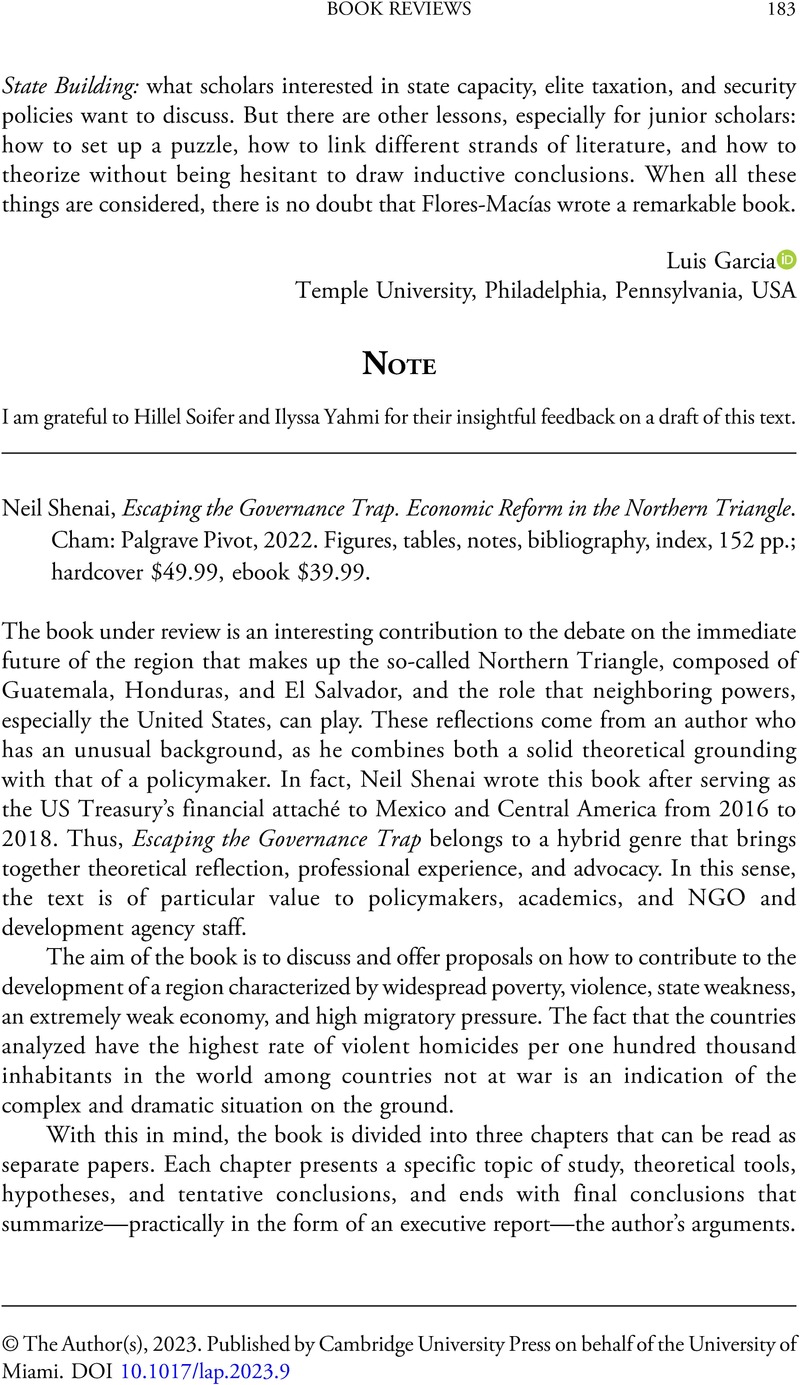No CrossRef data available.
Article contents
Neil Shenai, Escaping the Governance Trap. Economic Reform in the Northern Triangle. Cham: Palgrave Pivot, 2022. Figures, tables, notes, bibliography, index, 152 pp.; hardcover $49.99, ebook $39.99.
Review products
Neil Shenai, Escaping the Governance Trap. Economic Reform in the Northern Triangle. Cham: Palgrave Pivot, 2022. Figures, tables, notes, bibliography, index, 152 pp.; hardcover $49.99, ebook $39.99.
Published online by Cambridge University Press: 09 June 2023
Abstract
An abstract is not available for this content so a preview has been provided. Please use the Get access link above for information on how to access this content.

- Type
- Book Review
- Information
- Copyright
- © The Author(s), 2023. Published by Cambridge University Press on behalf of the University of Miami


